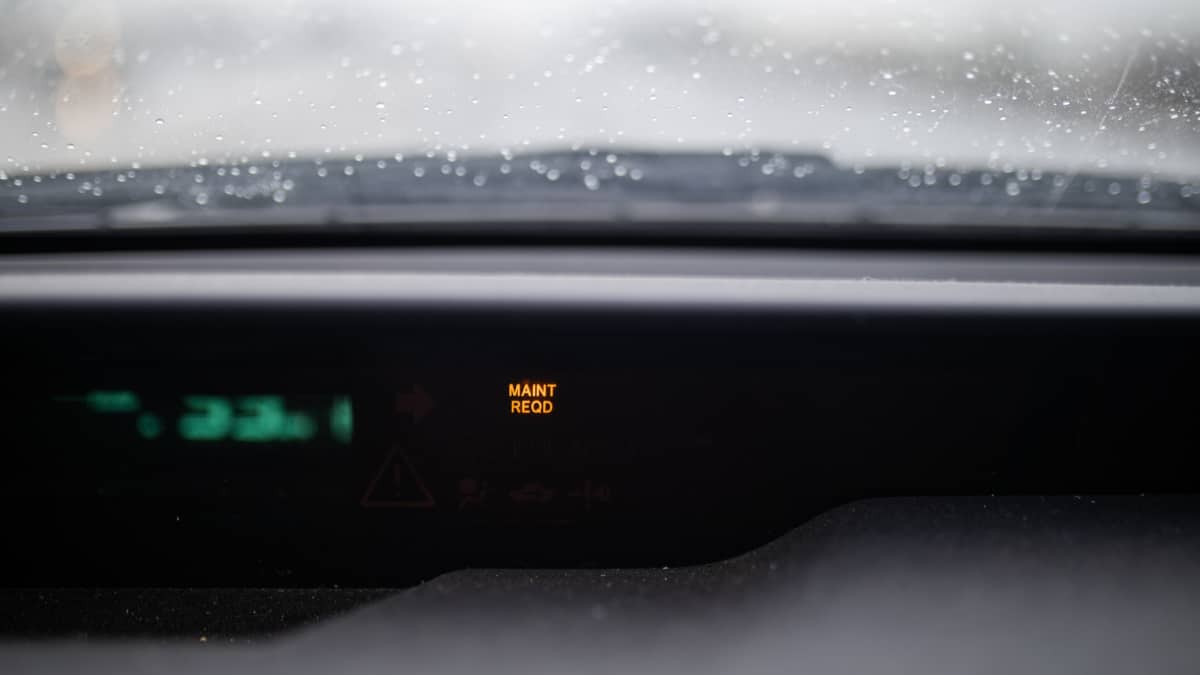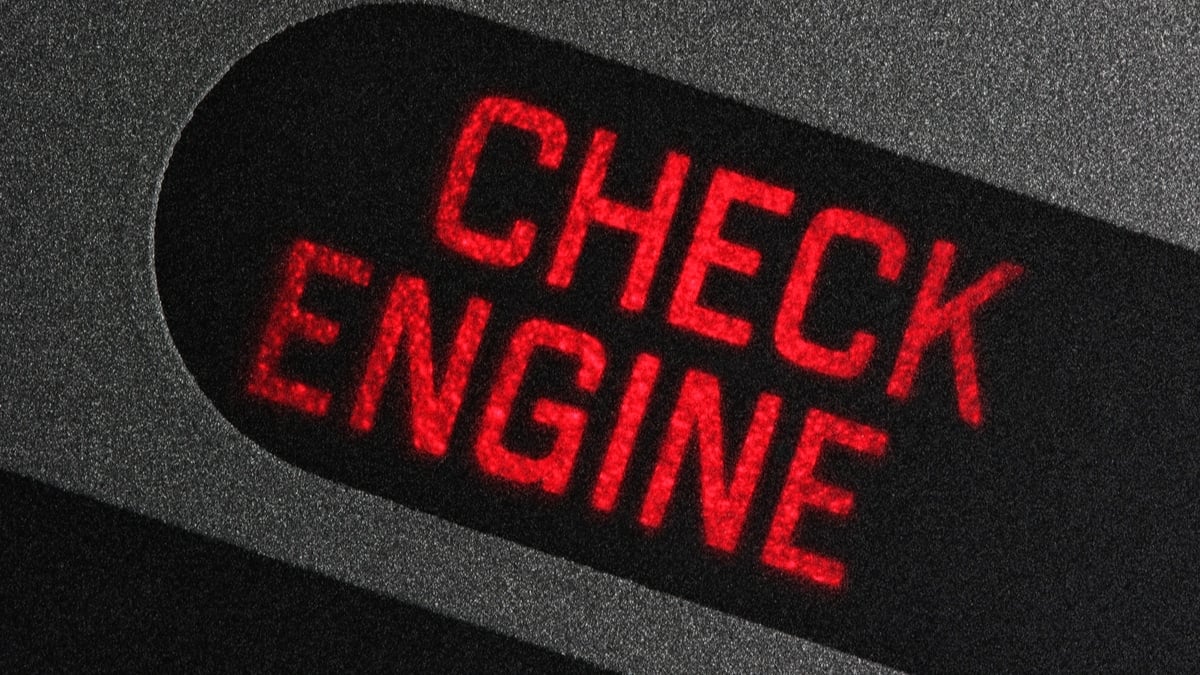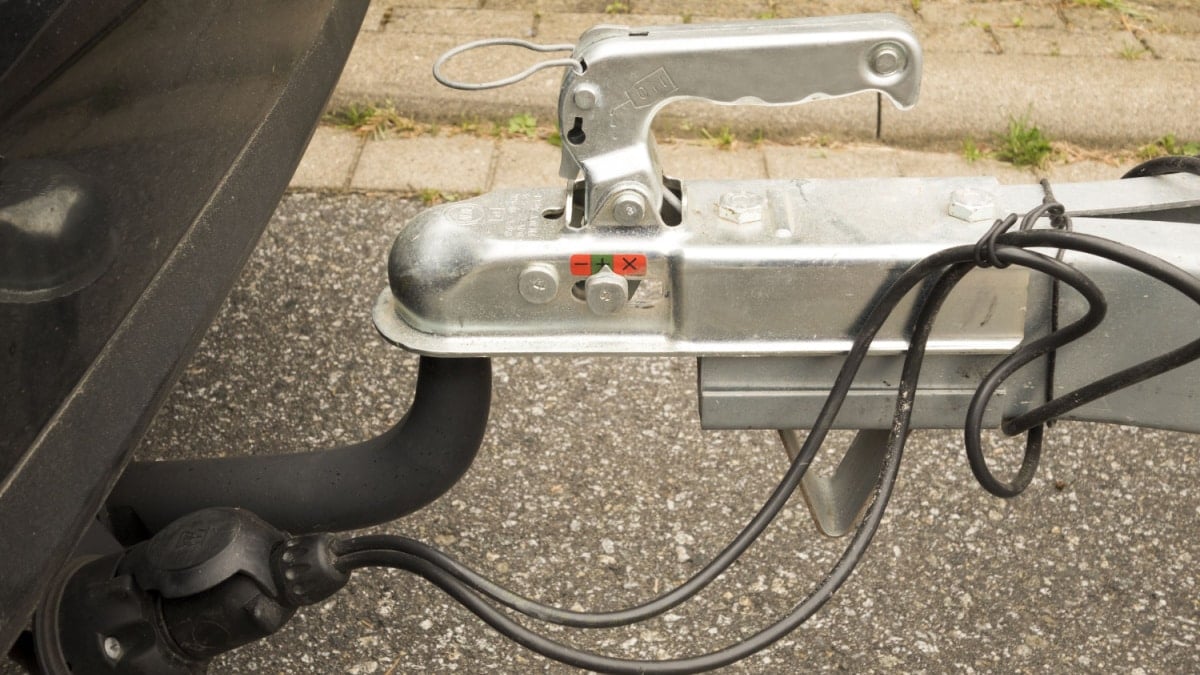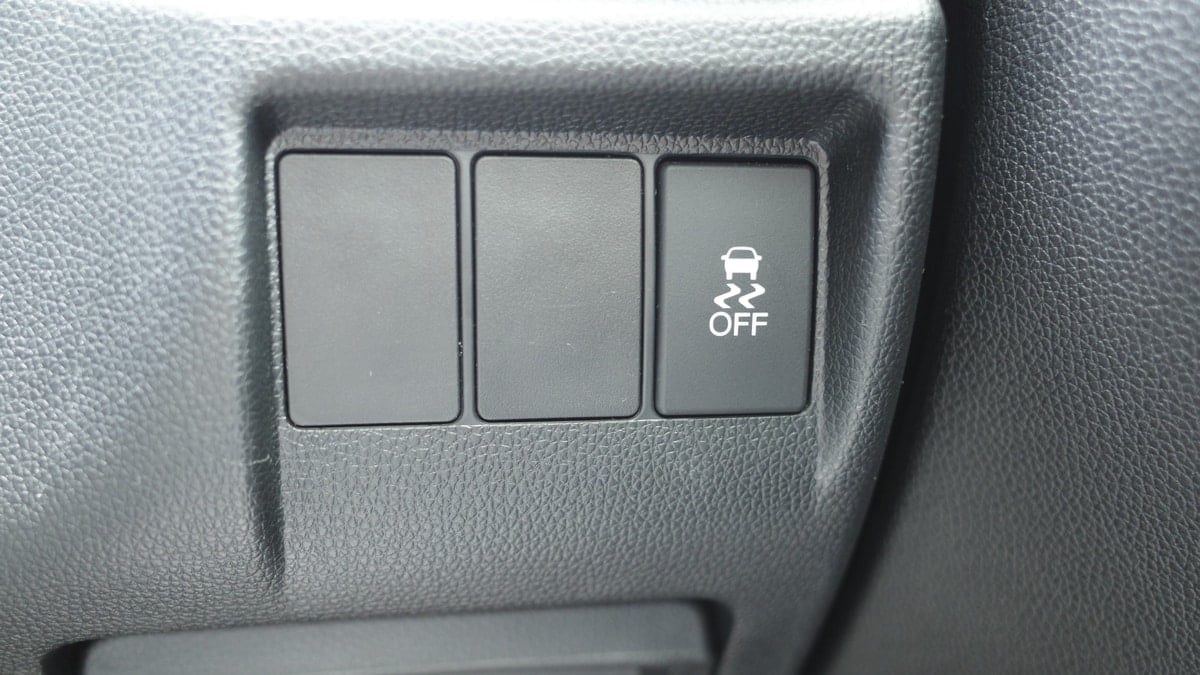What should you do if you are driving your Ford vehicle and see a symbol of a car on a wavy road with the words “Service AdvanceTrac” on your dash display?
This vital warning light is telling you that there’s a problem with the system, and it should never be ignored. That’s why it’s important to know the meaning of the Service AdvanceTrac warning light, so you can take prompt action for a better and safer ride.
This guide will show you the meaning and illustrate some of the top causes. I also review a couple of AdvanceTrac warning light fixes and discuss if you should drive your vehicle at all during this time.
What is the Service AdvanceTrac Warning Light?
The Service AdvanceTrac warning light indicates that there is an issue with the AdvanceTrac system. AdvanceTrac is only found in the Ford lineup of vehicles. It’s the company’s name for the electronic stability control system.
This stability control system relies on steering inputs, wheel speed sensors, and other technology to determine the car’s path versus the intentions of the driver. If needed, it can provide gentle correction that helps to avoid sliding and skidding, ensuring control over the vehicle is maintained.
As an example, if you are driving with the steering wheel to the left, but the car keeps moving in a straight line, the AdvanceTrac system can gently apply the brakes and reduce torque to correct the path. It’s a beneficial component when driving on slippery roads and during bad weather.
RELATED: Traction Control Light (TCS): Meaning, Causes (& How to Fix)
Service AdvanceTrac Warning Light Causes
The most common cause of a Service AdvanceTrac warning light is a faulty wheel speed sensor or mismatched wheels. It could also be a problem with the steering angle sensor, clock spring or the engine control system.
Here is a more detailed list of the most common causes of a Service AdvanceTrac warning light:
1. Failed Wheel Speed Sensor
The wheel speed sensor is placed on each wheel hub. These sensors are meant to monitor the speed of each wheel, ensuring that each tire is spinning at the rate it should. The information is sent to the ECU, where the data is used to determine what adjustments need to be made.
If a wheel sensor fails, the data won’t make it to the ECU. Therefore, the AdvanceTrac system can’t make the necessary adjustments, and the warning light shows up on the dashboard.
2. Mismatched Tires/Wheels
If you alter the wheel or tire size, you could throw off the specification of the AdvanceTrac system. This is most noticeable if you decide to mismatch the tires or wheels.
If the sensor determines that a value is out of the usual parameters, a code in the system could be set. Until changes are made, the AdvanceTrac system may not work as it was designed.
3. Malfunctioning Steering Angle Sensor or Clock Spring
The clock spring is made up of wire coils that run to the steering angle sensor. It’s also connected to the airbag and steering wheel controls.
If the clock spring breaks, the signal running from the steering angle sensor to the ECU can be disrupted. Without this connection, the AdvanceTrac system becomes inoperable. You may also see an airbag warning light and have trouble using the steering wheel controls.
It is also possible that the steering angle sensor itself is the issue, and not the clock spring.
4. Bad Engine Sensor
The AdvanceTrac system works in conjunction with the engine control module, and if there is anything wrong with the engine’s performance, it can also cause a Service AdvanceTrac warning light.
A faulty MAP or boost pressure sensor is a common issue on some Ford vehicles that will cause this warning light to turn on.
5. Corroded Battery Terminal
Another common problem on Ford vehicles that will cause the Service AdvanceTrac warning light is corroded battery terminal wires.
Carefully check and pull all wires connected to the positive terminal to make sure there are no loose wires there due to corrosion or rust.
RELATED: Battery Terminal Corrosion Causes (How to Fix & Prevent It)
6. Blown Fuse
Everything electrical in a vehicle runs through the fuses. There’s a fuse for every electrical function needed by the vehicle.
If the fuse blows, the signal to the AdvanceTrac system will be interrupted, leading to further problems. If the fuse is replaced and continues to blow, there could be a larger electrical system issue.
In many Ford vehicles, you will find a fuse located on the positive battery terminal that will blow and can cause the Service AdvanceTrac warning light to illuminate.
7. Electrical Wiring Defect
The most common electrical defect with AdvanceTrac systems is a problem with the ground connection. The bad ground will also lead to other electrical malfunctions since all of the sensors rely on it.
However, any electrical connection could be to blame. It could be damaged wiring, a corroded connection or simply a crimped wire leading to your trouble.
8. Low Brake Fluid
The brake fluid level must remain full to keep the system running at its best. If the level drops, it can reduce braking ability, putting you in danger on the road.
It can also affect the AdvanceTrac system and ABS since the brakes are used with both systems. In some cases, this low fluid level is due to a leak that must first be corrected.
9. Limp Mode
When the vehicle faces a major malfunction, it will go into limp mode. While in limp mode, any system that isn’t vital will be shut down to ensure the vehicle remains protected.
In most cases, limp mode will shut down the AdvanceTrac system temporarily, which can also cause the warning light to come on. With this condition, it’s unlikely that the AdvanceTrac system is to blame, and it will be re-engaged once you determine what’s causing the failure.
RELATED: Slip Light – Meaning, Causes (& How to Fix it)
Service AdvanceTrac Warning Light Fixes
1. Use Code Scanner
Once you see any warning light on the dashboard, it’s imperative to see what’s going on by using your OBD-II code scanner. Not every scanner is capable of reading these messages, so you will need a higher-end model to move on. However, these devices are a must-have if you want to do your own work.
Scan the system to see what errors are showing. If there are a lot of codes present, you can clear the codes and take a drive until the warning comes back on. This simple step ensures that only the most recent codes are looked at.
Once you see the codes, you can research the problem to determine the appropriate fix. Whether you need a new wheel sensor, clock spring or other component, it’s imperative that the problem gets repaired to ensure AdvanceTrac working again.
2. Check Brake Fluid
If the code doesn’t narrow down the problem, you should look closely at the brake fluid level. If it’s not filled to the appropriate line, you want to fill it up. Make sure you use the right fluid for your vehicle.
If the fluid continues to run low, you need to find the leak that’s causing the problem. Fix the leak to ensure proper brake and AdvanceTrac operation.
3. Inspect Electrical Wiring/Connections
If your diagnosis is leading you to the electrical system, start with the fuses. Find the appropriate fuse and determine if it is still working correctly. If it’s blown, replace it with a comparable fuse to fix the problem.
When the fuse isn’t to blame, any other wiring or connector could be to blame. Start by examining the ground connection. There must be a clean connection to ensure proper conductivity. If you have other sensors causing problems, you might be able to better figure out where the fault is.
It’s helpful to have a wiring diagram for your vehicle to track down what’s happening. Otherwise, you could get lost in all the wiring and connectors.
4. Visit a Professional Mechanic
All of the steps above are aspects that can be handled by most well-versed home mechanics. If these repairs and diagnostic steps don’t help you resolve the problem, you might find yourself in need of more support.
Don’t be afraid to reach out to a local repair shop if you are stumped. After all, you can’t have knowledge about every fault, nor do you have all of the professional equipment needed to repair the bigger problems. Sometimes, it makes more sense to pay a little extra and get the job done right.
Cost to Repair Service AdvanceTrac Warning Light
The average cost you incur from fixing this warning light depends on what needs to be repaired. In some cases, you are looking at a minimal amount of money, especially if you only need a new fuse or some extra fluid is required.
On the other hand, some of the repairs can be more expensive. For example, a clock spring could easily cost $775 or more on some vehicles, while electrical malfunctions can raise the repair costs if many hours of labor are needed to pinpoint the issue.
Should I Drive with the Service AdvanceTrac Warning Light On?
The car should continue running with the Service AdvanceTrac warning light on unless the car is in limp mode due to an engine issue. You could easily continue driving, and you may not notice any other issues during that time. In fact, if the weather is clear and the roads are dry, the drive might seem completely normal to you, causing you to wonder if you need anything fixed at all.
While it can be tempting to put off the repair, you will start to notice trouble when the weather turns bad or you hit slippery surfaces. You don’t want to be put in a dangerous situation, which is why I always recommend getting a repair as soon as you can.
Also, if the warning light is caused by a bad engine sensor, it can lead to more issue if you don’t repair the cause.
RELATED: Are Fords Good Cars? Are They Reliable?
What’s the difference between traction control and AdvanceTrac?
Traction control ensures that your car does not lose traction between your car’s tires and the road. The AdvanceTrac system is a stability system that prevents your car from skidding or skidding on the road at higher speeds.
Should Advancetrac be on or off?
The AdvanceTrac system should be on in most cases and for most drivers. The only time you would want to turn off the AdvanceTrac system is if you are stuck in mud or snow. This will prevent the system from removing power from the wheels.
What is the AdvanceTrac on a Ford?
AdvanceTrac is an electronic stability control system that is available on most Ford cars. It helps to prevent the wheels from slipping and losing traction, which can cause the vehicle to skid or spin out of control. The system uses sensors to monitor the driver’s inputs and the vehicle’s motion and then intervenes with braking and engine power to help keep the vehicle on course.
How do I turn off AdvanceTrac?
To turn off the AdvanceTrac system, you need to find the AdvanceTrac / Stability Control button in your car. Start the engine and hold the button for 5 to 10 seconds until the indicator light comes on.
Categories: Warning Lights
















